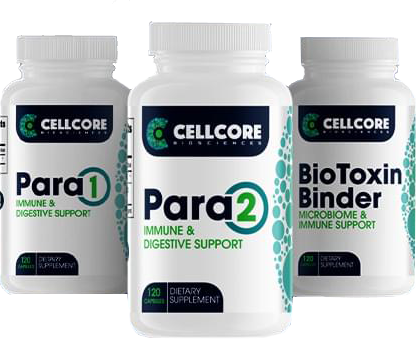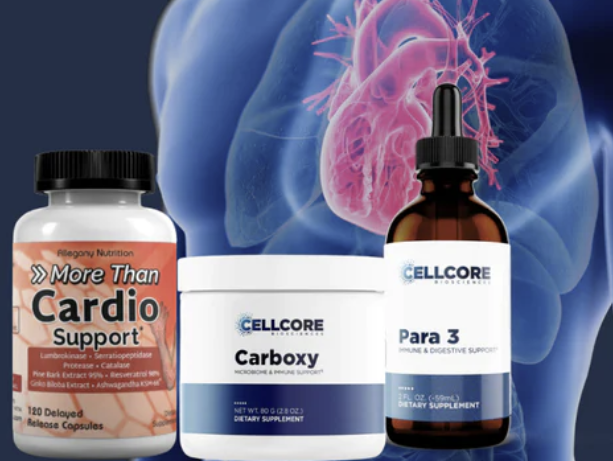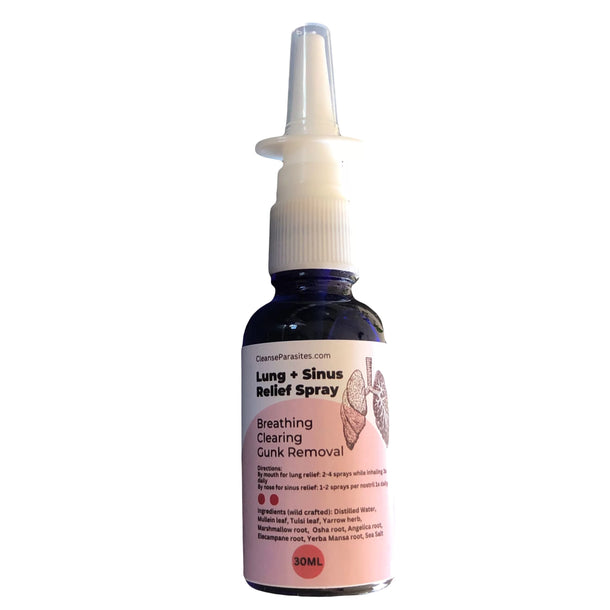Jenny Smith, a secretary and receptionist, could not explain what was happening to her. She began to make mistakes in her work and suffer from memory lapses. She would type a word backwards without even realizing it and proofread right over her mistakes. Her speech was slurring and when she answered the phone. . . she didn’t know what to say. One day she found herself walking across a busy intersection against the lights and didn’t know how she got there.
Leslie Blumenberg went to pick up her mother at the airport and got lost coming home. Although she had lived in the area for years, she became completely disoriented. It took her two hours to find her way back to her house. She was also suffering from cognitive problems, her words would jumble when she tried to speak coherent sentences, and she forgot how to spell.
Leslie had been eating soy foods, lots of them, for three years. When she went off soy, her problems cleared up, her mind returned to normal. But Jenny Smith did not eat soy. Her problems cleared up only when she went on a diet and stopped eating bread. She discovered that she could eat homemade bread without any problem. But supermarket bread gave her brain fog.
Jenny had a thyroid problem and had been taking thyroxine for years. When her office connected with the internet, she went online to a thyroid site. There she learned that soy was a potent thyroid depressant and should not be consumed by anyone with thyroid troubles. Next trip to the grocery store, she began to read labels and discovered that every loaf of bread in the supermarket contained soy flour.
“Thyroid enlargement in rats and humans, especially children and women, fed with soyabeans has been known for half a century,” according to Theodore Kay at Kyoto University in Japan. His 1988 study attempted to determine the amount of iodine required to prevent goitre in populations consuming soy foods. He found that small amounts of iodine could indeed prevent noticeable thyroid enlargement, but even large amounts did not prevent pathological changes to the thyroid gland. He also determined that the most potent goitrogens in soy cannot be removed by cooking.
Although scientists have known for many years that soy is goitrogenic, it was only recently that they were able to pinpoint the actual thyroid-depressing compounds. Researchers at the US Toxicological Laboratory in Arkansas found that the thyroid-depressing substances are isoflavones, the estrogen-like compounds found plentifully in the soybean.
This discovery came as a shock to the soy industry, which has heavily promoted these phytoestrogens as beneficial. It is the phytoestrogens or isoflavones in soy that are supposed to protect us from heart disease, cancer, osteoporosis and the discomforts of menopause. Yet in normal women consuming sufficient iodine, just 30g of roasted soybeans daily, containing about 38mg isoflavones, were found to depress thyroid function–less than the amount in two glasses of soy milk, two servings of tofu, or a handful of roasted soy nuts. In sensitive individuals, such as Jenny Smith, even small amounts of soy were able to provoke the mental confusion indicative of disrupted thyroid function.
ISOFLAVONES IN OUR FOOD
| Bread with added soy flour, 2 slices | 4 mg |
| Meatless chicken nuggets, 1/2 cup | 15 mg |
| Soy hot dog | 15 mg |
| Soymilk, 8-ounce glass | 20 mg |
| Green soybeans, raw, 1/2 cup | 20 mg |
| Miso, 1/4 cup | 21 mg |
| Tofu, 1/2 cup | 28 mg |
| Soy cheese, 1/2 cup | 31 mg |
| Soymilk skin or film , cooked, 1/2 cup | 51 mg |
| Tempeh, cooked, 1/2 cup | 53 mg |
| Soybean chips , 1/2 cup | 54 mg |
| Mature soybeans, cooked, 1/2 cup | 55 mg |
| Dry roasted soybeans , 1/2 cup | 128 mg |
| Revival soy-based meal replacement, 1 serving | 160 mg |
Further confirmation of soy’s adverse effects on the mind comes from a recent study of Japanese Americans living in Hawaii. Professor Lon White found a significant statistical relationship between two or more servings of tofu per week and “accelerated brain aging.” Those participants who consumed tofu in mid-life had lower cognitive function in late life and a greater incidence of Alzheimer’s and dementia. What’s more,” said Dr. White, “those who ate a lot of tofu, by the time they were 75 or 80, looked five years older.”
According to Jennifer A. Phillips, writing for Cambridge Scientific Abstracts, estrogens (including the phytoestrogens in soy) can block the efficiency of thyroid hormones. This is why women need more thyroid hormones than men and are more prone to thyroid troubles. Since thyroid hormone acts as a neurotransmitter, low levels can mimic psychiatric disease. Severe hypothyroidism can cause symptoms similar to Alzheimer’s disease, including memory loss, confusion, slowness, paranoid depression and even hallucinations. Other symptoms of low thyroid function include fatigue, loss of hair, difficulties at menopause, digestive problems, constipation, infertility and brittle bones.
Individuals with low thyroid function are also prone to heart disease. Soy proponents claim that soy helps the heart because it lowers cholesterol. Yet in 1992, researchers at the National Heart, Lung and Blood Institute looked at every study that had been published about the risk of having high or low cholesterol and concluded that mortality was greater in women with low cholesterol than with high cholesterol. And a new study, published in the Lancet, suggests that high cholesterol levels are protective even for men. In any case, no study has ever offered direct proof that soy can prevent heart disease and in most of the major studies in which cholesterol levels were lowered through either diet or drugs, a greater number of deaths occurred in the treatment groups than in controls, deaths from stroke, cancer, intestinal disorders, accidents and suicide.
Scientists looking at the correlation of soy foods and “brain aging” have focussed on isoflavones, but there are a number of components in soy foods that can contribute to reduced mental function. One is phytic acid which blocks zinc absorption. Zinc is essential for proper functioning of the brain. Modern processed soy foods contain high levels of MSG, fluoride and aluminum, all of which are toxic to the nervous system. Furthermore, during processing, at least two categories of carcinogens are formed, lysinealanines and nitrosamines.
Other substances in soy can contribute to the digestive problems so common in individuals with thyroid troubles, including potent enzyme inhibitors that block the breakdown of protein, and lectins that are highly irritating to the digestive tract. These compounds tend to occur in higher amounts in genetically engineered soybeans.
When soy protein isolate was fed to rats, the animals required higher than normal levels of vitamins E, K, D and B12 and developed deficiency symptoms of calcium, magnesium, zinc and many other minerals.
Soy proponents claim that soy is a staple in Asia. A “staple” is defined as a major commodity, one that provides a large portion of calories in the diet, such as rice and fish in Japan, or rice and pork in China. The Japanese consume 150 pounds of fish per person per year, or almost one-half pound per person per day and a 1977 dietary survey in China determined that 65 percent of calories came from pork, including the pork fat used in cooking. By contrast, overall consumption of soy in Asia is surprisingly low. The average soy consumption in China is about 10 grams or 2 teaspoons per day. Levels are somewhat higher in Japan, averaging about 50 grams or 1/4 cup per day. In both countries, soy is used as a condiment or flavoring, and not as a substitute for animal foods. Seafood and seaweed in the Japanese diet provide sufficient iodine to counteract the negative effects of the isoflavones in soy.
In Asia, soy is mostly consumed in fermented form, but it is not considered an appropriate food for babies. When a mother is unable to nurse and a wet nurse is unavailable, her infant is given milk from cows or water buffalo. In the US, however, an estimated 750,000 babies per year receive infant formula made from processed soybeans. Parents use soy formula in the belief that is it healthier than formula based on cows’ milk. In fact, when soy infant formula first became commercially available, manufacturers promised that soy formula was “better than breast milk.”
Naomi Baumslag, Clinical Professor of Pediatrics at Georgetown University Medical College and an expert on breast feeding, cites many reasons for parents to avoid soy formula. “There is a great deal of scientific evidence that soy formula can be damaging to newborns,” she says, citing high levels of phytic acid, enzyme inhibitors, lectins, manganese and phytoestrogens. High levels of manganese are toxic to babies because they lack the blood-brain barrier that develops later in childhood. Manganese overdose is associated with brain damage leading to violent behavior. Furthermore, soy lacks many factors that are essential to normal brain development including essential fatty acids, DHA-brain growth factor and cholesterol.
The most serious problem with soy formula is high levels of isoflavones. In Japan, soy foods contribute about 25-28 mg of isoflavones per day, or just less that one-half mg per kilogram of body weight. In American women, 45 mg of isoflavones or three-quarters mg per kilogram of body weight per day caused endocrine disruption after just one month. Babies fed exclusively on soy-based formula receive a dose that is four to eleven times higher, based on body weight. A recent study found that babies fed soy-based formula had 13,000 to 22,000 times more isoflavones in their blood than babies fed milk-based formula. Dr. Mike Fitzpatrick, a New Zealand toxicologist estimates that an infant exclusively fed soy formula receives the estrogenic equivalent of at least five birth control pills per day.
PHYTOESTROGENS IN DIETS OF INFANTS AND ADULTS
| Average Isoflavones Intake | Isoflavone per Kg of Body Weight* | |
| Japan (1996 survey) | 10 mg | 0.17 mg |
| Japan (1998 survey) | 25 mg | 0.42 mg |
| Japan (2000 survey) | 28 mg | 0.47 mg |
| In Japanese women, causing thyroid suppression | 38 mg | 0.60 mg |
| In American women, causing hormonal changes after 1 month | 45 mg | 0.75 mg |
| FDA recommended amount for adults | 75 mg | 1.25 mg |
| In children receiving soy formula | 38 mg | 6.25 mg |
* Assumed 60 kg for adults, 6 kg for infants
Fitzpatrick believes that soy feeding accounts for the alarming levels of premature maturation in girls. This was the same conclusion reached in 1986 by investigators in Puerto Rico, where early maturation is commonplace. The researchers expected to find a correlation with consumption of milk and meat and were surprised to discover that the strongest correlation was with soy infant feeding. Girls who had consumed large amounts of cow’s milk as children actually had lower rates of early development.
In the US, one percent of all girls now show signs of puberty, such as breast development or pubic hair, before the age of three; by age eight, almost 15 percent of white girls and just under half of African-American girls have one or both of these characteristics, according to a recent study reported in the journal Pediatrics. Fitzpatrick believes that soy infant feeding disrupts hormonal development in the same way as environmental estrogens such as PCBs and DDE (a breakdown product of DDT), or the synthetic estrogen DES. The use of soy formula in the WIC (Women, Infants and Children) program, which supplies free formula to low income mothers, may explain the astronomical rates of early development in African American girls.
The consequences are tragic. Young girls with mature bodies must cope with feelings and urges that most children are not well-equipped to handle. And early maturation in girls is frequently a harbinger for problems with the reproductive system later in life, including failure to menstruate, infertility and breast cancer.
What are the effects of soy products on the hormonal development of boys? Male infants undergo a “testosterone surge” during the first few months of life, when testosterone levels may be as high as those of an adult male. During this period, the infant is programmed to express male characteristics after puberty, not only in the development of his sexual organs and other masculine physical traits, but also in setting patterns in the brain characteristic of male behavior. In monkeys, deficiency of male hormones impairs learning and the ability to perform visual discrimination tasks–such as would be required for reading–and retards the development of spatial perception, which is normally more acute in men than in women.
Learning disabilities, especially in male children, have reached epidemic proportions. Soy infant feeding–which floods the bloodstream with female hormones that could inhibit the effects of male hormones–cannot be ignored as a possible cause for these tragic developments.
Other problems that have been anecdotally associated with children of both sexes who were fed soy-based formula include extreme emotional behavior, depression, asthma, immune system problems, pituitary insufficiency, thyroid disorders and irritable bowel syndrome.
Why have parents not been alerted to the potential dangers of soy formula? The formula industry is large and powerful, able to influence the outcome of scientific research and wage successful publicity campaigns. A good example is a recent University of Iowa study, funded by the formula industry and published in the Journal of the American Medical Association, comparing the reproductive health of adults who had been fed soy- or milk-based formula as infants. The survey found that the soy group had higher levels or reproductive disorders, asthma and allergies. Females of the soy group were more likely to be sedentary and to have taken weight loss medications. Yet the authors omitted these findings in their abstract and concluded that “. . . the findings of the current study are reassuring about the safety of soy infant formula.” The University of Iowa study was widely reported in the press as a vindication of soy formula.
The JAMA study follows a June 1, 2001 report published in Cancer Research which found that genistein, one of the isoflavones in soy, was more carcinogenic than the synthetic estrogen DES when exposure occurred during “critical periods of differentiation,” such as during infancy. Medical professionals insisted that DES was safe for pregnant women until they discovered that women whose mothers took DES suffered from very high rates of cervical cancer. The authors of the Cancer Research study concluded that “. . . the use of soy-based infant formulas in the absence of medical necessity and the marketing of soy products designed to appeal to children should be closely examined.”
Concerns about the dangers of soy have prompted consumer groups in New Zealand and Canada to call for a ban on the sale of soy infant formula. The law firm of Johnston Lawrence in New Zealand is collating a list of victims in preparation for a class action lawsuit in New Zealand, with follow-on legal action in the US. If you believe your child has been damaged by soy infant formula, or if you have suffered thyroid problems as a result of soy consumption, send your confidential information to PO Box 1213, DX SP 20004, Wellington, New Zealand or roger (at) johnlaw.co.nz.
In the US, the Weston A. Price Foundation is spearheading efforts to have soy formula removed from the market. If you suspect your child has been damaged by consumption of soy formula, please write to the following congressmen, with a copy to the Weston A. Price Foundation:
Senator Tom Harkin (D-IA)
United States Senate Agriculture, Nutrition and Forestry Committee
328A Russell Senate Office Building
Washington, D.C. 20510Senator Orin Hatch (R-UT)
Senate Subcommittee on Health Care of the Finance Committee
Caucus of Complementary and Alternative Health Care
219 Dirksen Senate Office Building
Washington, D.C. 20510The Honorable Dan Burton (R-IN)
Chairman, House Committee on Government Reform
Caucus of Complementary and Alternative Health Care
2157 Rayburn House Office Building
Washington, D.C. 20515The Honorable Dennis Kucinich (D-OH)
Caucus of Complementary and Alternative Health Care
U.S. House of Representatives
1730 Longworth House Office Building
Washington, D.C. 20515The Weston A. Price Foundation
PMB 106-380
4200 Wisconsin Avenue, NW
Washington, DC 20016
Sources:
www.csa.com/hottopics/thyroid/oview.html
soyonlineservice.co.nz
www.westonaprice.org
About Sally Fallon and Mary G. Enig, PhD
Sally Fallon Morell is the founding president of the Weston A. Price Foundation and founder of A Campaign for Real Milk. She is the author of the best-selling cookbook, Nourishing Traditions (with Mary G. Enig, PhD) and the Nourishing Traditions Book of Baby & Child Care (with Thomas S. Cowan, MD). She is also the author of Nourishing Broth (with Kaayla T. Daniel, PhD, CCN).
______________________________________________________________________________________________
Mary G. Enig, PhD, FACN, CNS, is an expert of international renown in the field of lipid chemistry. She has headed a number of studies on the content and effects of trans fatty acids in America and Israel and has successfully challenged government assertions that dietary animal fat causes cancer and heart disease. Recent scientific and media attention on the possible adverse health effects of trans fatty acids has brought increased attention to her work. She is a licensed nutritionist, certified by the Certification Board for Nutrition Specialists; a qualified expert witness; nutrition consultant to individuals, industry and state and federal governments; contributing editor to a number of scientific publications; Fellow of the American College of Nutrition; and President of the Maryland Nutritionists Association. She is the author of over 60 technical papers and presentations, as well as a popular lecturer. She is the author of Know Your Fats, a primer on the biochemistry of dietary fats as well as of Eat Fat Lose Fat (Penguin, Hudson Street Press, 2004). She is the mother of three healthy children. SOURCE: westonaprice











